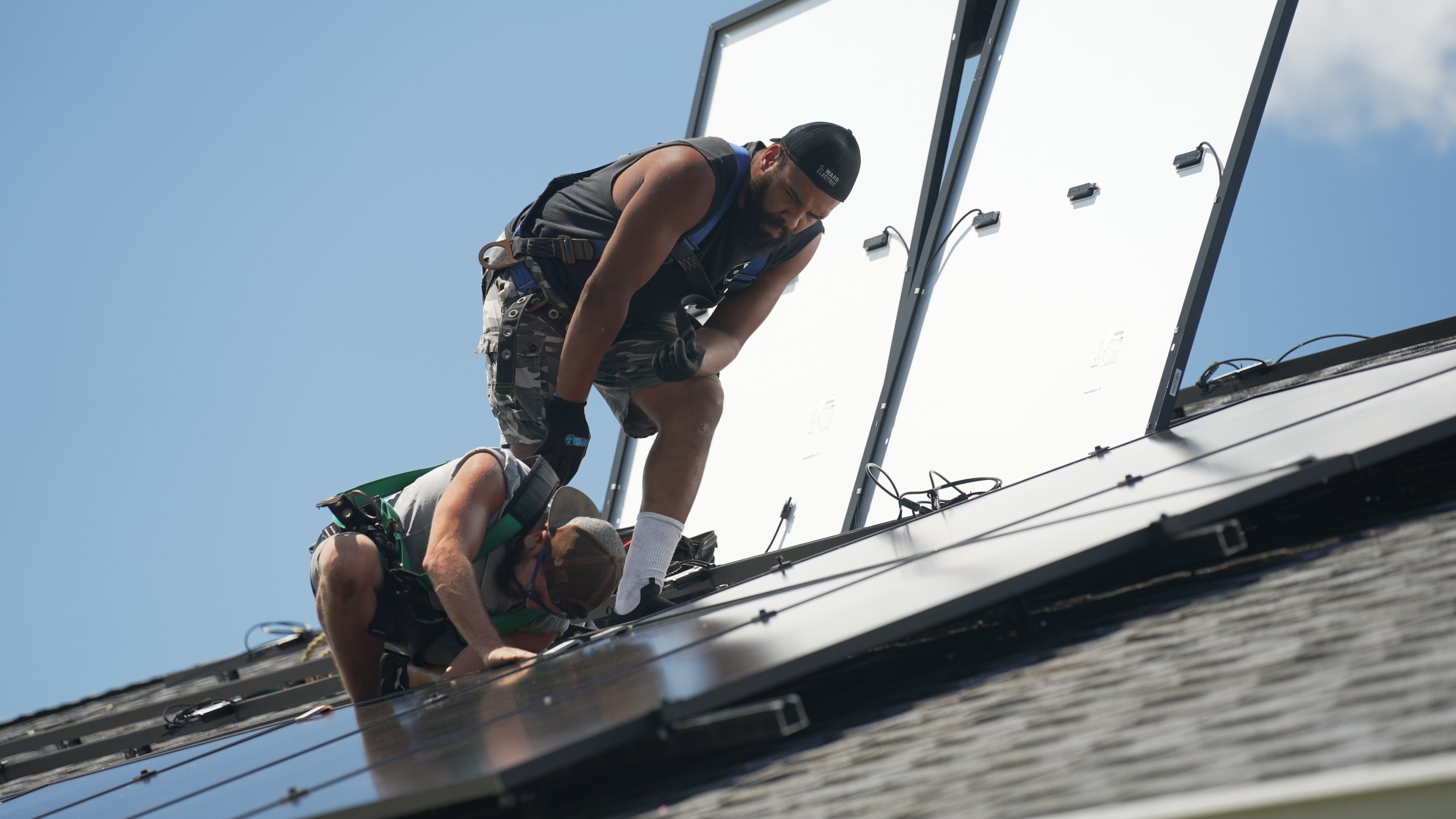What's Included in the Cost of a Solar System?
When you receive a solar quote, it’s more than just panels on your roof. A complete system includes:
Solar Panels – The core of your system, available in different wattages and efficiencies.
Inverter(s) – Convert solar energy into usable electricity for your home.
Mounting Hardware – Racks and brackets to securely attach the panels to your roof.
Wiring & Electrical Components – Necessary for safe, code-compliant system performance.
Monitoring System – Optional tech to track your energy production in real time.
Installation Labor – Includes site evaluation, design, permitting, and professional labor.
Permit & Inspection Fees – Required by your local building department and utility provider.
Average Cost of Residential Solar in the U.S.
While exact prices vary by system size, region, and roof type, the national average cost of a fully installed solar system is typically
💰 $15,000 – $25,000 before incentives
💸 $10,000 – $18,500 after federal tax credit (ITC)
Smaller homes (4–5 kW systems) may land closer to $10K–$15K
Larger homes (8–10 kW systems) can reach $20K–$30K+
🏠 Connecticut homeowners can often benefit from additional state incentives, which lower the cost even more (ask us about local rebates!).
Factors That Impact Your Total Cost
No two systems are the same. The following variables influence your final price:
System Size (kW): Bigger systems cost more upfront but offset more of your utility bill.
Roof Complexity: Steep or multi-surface roofs require more time, materials, and custom racking.
Shading & Location: Heavy tree cover may require special design or solar optimizers.
Brand & Equipment Quality: Premium panels or battery backups can increase cost, but improve performance and longevity.
Electrical Upgrades: Older homes may need panel upgrades to meet modern solar requirements.
Not all costs are hardware. “Soft costs” include:
Permit & Interconnection Fees
Project Management & Design
Marketing, Admin, & Customer Support
These soft costs account for nearly 50% of total installation cost nationwide—but at SolarShip Corp, we work to streamline and reduce them wherever possible.
Understanding “Soft Costs”
How We Keep Costs Clear & Transparent
At SolarShip Corp, we believe in straightforward pricing—no hidden fees or surprise charges. Your quote will include a detailed breakdown of:
✅ Equipment costs
✅ Labor and permitting
✅ Incentives or rebates applied
✅ Any optional add-ons (like batteries or critter guards)
We walk you through it step-by-step so you understand exactly what you’re paying for—and why.
What Is ROI in Solar?
Return on Investment (ROI) refers to how much you save compared to what you spend. In solar, it’s measured by the total savings on your energy bills over time—minus your initial system cost.
Formula:
ROI (%) = (Total Savings – Total Cost) ÷ Total Cost × 100
What Is the Payback Period?
Your payback period is the time it takes for your solar system to “break even”—meaning the amount you’ve saved equals what you’ve spent.
⏳ Most solar systems have a payback period of 6–10 years
📅 After that point, all the energy your system produces is pure savings
🧾 You continue to save for 15–20+ years beyond your payback period
Factors That Affect Payback Time
-
The total price of your solar system is one of the biggest factors influencing how quickly you'll see a return.
System Size: Larger systems cost more up front but often produce more savings long-term.
Type of Equipment: Premium panels or inverters may increase the initial cost but offer better efficiency and durability.
Installation Complexity: A complex roof layout, high-pitched surfaces, or structural upgrades can increase labor costs.
-
The availability of local, state, and federal incentives can dramatically lower your net cost and shorten your payback period.
Federal 30% Tax Credit (ITC): Reduces your tax liability by 30% of your total system cost.
State & Local Rebates: Some areas offer thousands in additional savings up front.
Utility Programs: Rebates or performance-based incentives (PBIs) can offer ongoing benefits over time.
-
How much electricity your household uses plays a major role in how much you save.
Homes with higher energy use often see greater absolute savings.
If your system can offset 100% of your usage, your payback period will be significantly shorter.
-
The cost of electricity where you live determines how valuable each kilowatt-hour of solar power is.
Higher utility rates = bigger monthly savings.
States with rapidly rising energy costs tend to see faster ROI from solar adoption.
-
How you pay for your system affects your upfront investment, monthly savings, and long-term ROI.
Cash Purchase: Highest savings and fastest payback, typically 6–8 years.
Solar Loans: Spread out the cost, making solar accessible with minimal up-front payment, but the payback period may be longer.
Leases/PPA: You may save on electricity, but you don’t own the system—this results in limited ROI and fewer incentive benefits.
Real-World ROI Example
Assume a $25,000 solar system with 30% federal tax credit and $200/mo electric bill:
Amount
Metric
$17,500
Total Cost After Incentives
~$2,400
Annual Savings on Bills
~7.3 years
Payback Period
$128,000+
30-Year Savings
Estimated ROI
366%
📈 Beats inflation and rising energy prices
🏠 Increases home value (buyers love solar homes)
💡 Delivers decades of returns from a one-time install
🛠️ Low maintenance compared to other home investments
💬 Solar often delivers better ROI than a kitchen remodel, new roof, or even some retirement investments.
Why Solar Is a Smart Long-Term Investment
Key Takeaway:
The upfront cost of solar can vary, but when you know what’s included and what factors influence pricing, you can make a confident decision. SolarShip Corp ensures that every homeowner receives a custom, transparent quote tailored to their home and energy needs.






